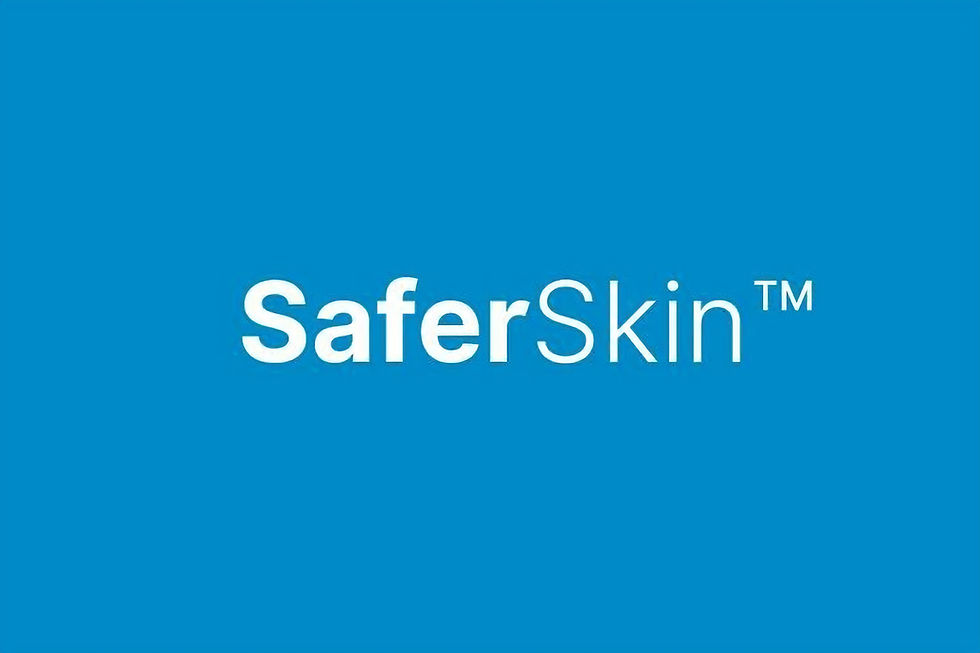Integrated Approaches to solving Skin Safety Assessment problems
- Connor
- Mar 12, 2020
- 3 min read
Updated: Aug 12, 2024

Skin safety is one of the most important goals of the consumer products industry. The cosmetics industry is a lead developer and end-user of new approach methods (NAMs) to replace previously used animal experiments. New human clinical evidence is only available when there is strong justification. The first step in product decision making should always be to consider using all currently available evidence from data and models.
The safety assessor must answer the question of whether they are happy with proposed concentration levels for ingredients in new formulations or whether concentrations need to be reduced based on historical data and current uncertainties. NAMs may be proposed to reduce uncertainties either using current OECD-approved assays or more advanced assays such as SENS-IS or GARD applied to a key concern such as skin sensitisation. When larger high-quality datasets are available, a multitude of machine learning and AI techniques can be applied to the data to provide models guiding assessment.
We started working on SaferSkin as a needed application because we observed that:
a) best industrial practices and methods developed with NAMs were not being made available broadly in a user-friendly manner to important end-users such as risk assessors,
b) published methods were not easily reproduced or comparable,
c) close collaboration between method developers, scientists and engineers could and should support the development of a superior and modern toolset cf. the currently fragmented offerings of disjointed in silico tools, databases, and biological assays.
Our subsequent work on the addition to SaferSkin of a harmonised data infrastructure supported by EdelweissData addresses additional issues and requirements:
application of machine learning and modelling techniques to formulations
application of Bayesian modelling techniques to tiered strategies for decision making
need for trusted auditable reproducible data processing workflows
support of well-documented in vitro and in silico protocols stored in the system and linked to datasets
standardised description of metadata and terminology in knowledge infrastructure
ability to extend and customise the application for individual customers from individual consultants through small businesses through larger customers, creating solutions that work for them on their tasks, problems, and data.
Edelweiss Connect and Wepredic Partnership
But there still remained one essential ingredient to address: could we address the fragmentation between the in silico and in vitro communities, could we move away from a world where assays are run at CROs to create reports for customers without effective interrogation of modern data science and software engineering? Could we virtualise and integrate scientific approaches and create a more modern knowledge infrastructure supporting the complete value chain of safety assessment? We could see that we could and should and hence, subsequent to in-depth discussions between the CEOs of Edelweiss Connect and Wepredic, we agreed to integrate all aspects of our in silico and in vitro safety assessment resources into one SaferSkin platform and operation.
We also agreed to adopt a model whereby SaferSkin can be extensible to new science and technologies emerging from further projects and partners. SaferSkin is now adopting a model to support representatives and partners in different locations. The use of modern cloud computing can deliver services and results to customers in a highly cost-effective, secure but customised manner. New customers and partners can contact us to participate in our SaferWorldbyDesign model, where we optimise expertise, cost and results for both more routine questions and challenging new initiatives, such as building 21st-century knowledge infrastructure with matching machine learning and AI services supporting collaborative decision making in daily product design decisions.
Consider using the “quieter time” of the coming weeks to reach out to us to discuss your needs, problems, and ideas. Join our SaferWorldbyDesign reflection and actions!


Comments